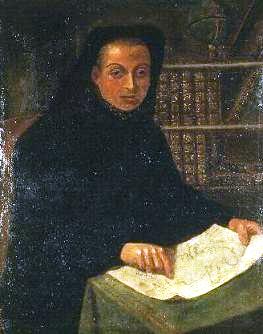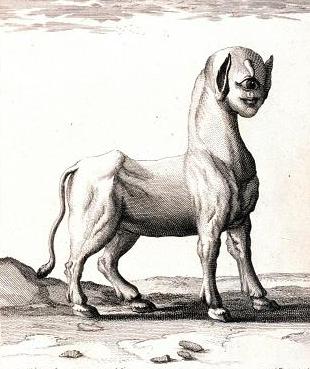Louis Feuillée
Louis Éconches Feuillée | |
|---|---|
 Feuillée, pointing at a map of Martinique. | |
| Born | 1660 Mane, Alpes-de-Haute-Provence, France |
| Died | 18 April 1732 Marseilles |
| Nationality | |
| Scientific career | |
| Fields | Botany, astronomy, geography |
| Author abbrev. (botany) | Feuillée |
Louis Éconches Feuillée (sometimes spelled Feuillet) (1660,
Biography
Feuillée was educated at the Minim convent of Mane, in Provence. He was born in Mane, near Forcalquier, in 1660. He was taught astronomy and cartography by Jean Mathieu de Chazelles, and Charles Plumier, who had described some 6,000 species of plants during a voyage to the Caribbean, taught him botany.
He attracted the attention of members of the
In September of the following year he began a cruise along the northern coast of South America, making observations at numerous ports. In the Antilles, he collected new species of
In 1707, he voyaged to what is now Argentina, rounded Cape Horn at the end of 1708 after a tempestuous voyage, and arrived at Concepción, Chile on 20 January 1708. He remained in that city for a month, conducting astronomic, botanical, and zoological surveys and at the end of February traveled to Valparaíso. He then traveled to Peru and returned to France in August 1711, where he published a complete inventory of his observations in three volumes (1714–1725). Louis XIV granted him a pension and built an observatory for him at the convent of the Minims in Marseilles.
The Spanish colonies of Central and South America seemed to have received many visits by French scientists during this period. These men served both as unofficial "scientific advisors" –but also as spies. Between 1735 and 1744, scientists like Louis Godin, Charles Marie de La Condamine, and Pierre Bouguer would take part in similar expeditions.
He died at
South American discoveries
During this South American voyage, he had described and mapped the islands of
Upon his departure, with a
.He discovered, one century before Alexander von Humboldt, the existence of the large circular current skirting the Chilean and Peruvian coasts (now called the Humboldt Current).
He also noted the 6-month-delayed order of the seasons south of the Equator, as compared with their sequence in the Northern Hemisphere.
Other voyages
In 1724, on his fourth and last voyage, he travelled to the
Feuillée's monster

Feuillée scientifically described many South American plants for the first time. He also described a monster born of a ewe that he was permitted to see in Buenos Aires:[1]
The monster which is shown in the figure appeared in Buenos Aires on 26 August. The contrast of three resemblances which it had, that of a child, a horse, and a calf, surprised all who saw it. I asked the person who showed it to me if I could examine it in order to describe it faithfully, but he never allowed me to do this. I examined it from quite close and drew its principal traits without his noticing. As soon as I returned to my room, having all the information about the monster vividly in my memory, it furnished what was missing from the drawing. I completed it and represented it in its natural color.
Plants and locations named after Feuillée
- The genus of plants Fevillea (or Feuillea) and Indofevillea, a genus in the family Cucurbitaceae in India.[2]
- The pacay, or ice-cream bean, Inga feuilleei
- The lunar crater Feuillée
Works by Feuillée
- Journal des observations physiques, mathématiques, et botaniques (Paris, 1714).
- Suite du Journal (Paris, 1725).
Gallery
See also
- List of Roman Catholic scientist-clerics
References
- ^ "Description of a Monster Born of a Ewe (Translation of August 1708 Work)". NOAA Central Library. 11 June 2011.
- ^ "Indofevillea Chatterjee | Plants of the World Online | Kew Science". Plants of the World Online. Retrieved 26 May 2021.
- ^ International Plant Names Index. Feuillée.
Sources
![]() This article incorporates text from a publication now in the public domain: Herbermann, Charles, ed. (1913). "Louis Feuillet". Catholic Encyclopedia. New York: Robert Appleton Company.
This article incorporates text from a publication now in the public domain: Herbermann, Charles, ed. (1913). "Louis Feuillet". Catholic Encyclopedia. New York: Robert Appleton Company.
External links
- Histoire des plantes medecinales qui sont le plus en usage aux royaumes de l'Amerique meridionale, du Perou & du Chily (Paris: 1714) digitized by the John Carter Brown Library
- (in French) Feuillée
- (in English) Louis Feuillée at the Catholic Encyclopedia






